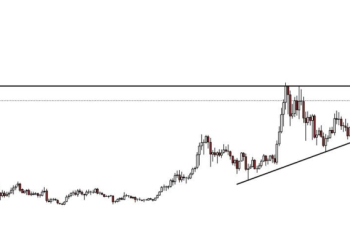The European Union is weighing a fresh round of sanctions targeting A7A5, a ruble-backed stablecoin that has rapidly become the largest non-US-dollar pegged token in the world.
Key Takeaways:
The EU is considering sanctions against A7A5, the top ruble-backed stablecoin. A7A5’s market cap surged 250% after earlier EU crypto sanctions. Final approval of the new sanctions depends on all 27 EU member states.The move would prohibit EU-based individuals and companies from interacting with the token, either directly or via intermediaries, according to internal documents reviewed by Bloomberg.
The proposed action forms part of the EU’s broader strategy to clamp down on financial instruments enabling Russia to skirt Western sanctions.
EU Sanctions Block Crypto Access for Russian Users
The bloc’s earlier crypto sanctions, announced on September 19, blocked transactions for Russian residents and imposed new limits on interactions with foreign banks linked to Russia’s crypto sector.
Several financial institutions across Russia, Belarus, and Central Asia are also under scrutiny. Authorities believe these banks may have facilitated sanctioned crypto-related activity, including the movement of digital assets linked to blacklisted entities.
A7A5 emerged in February, launched on the Ethereum and Tron blockchains by Moldovan banker Ilan Shor in partnership with Russia’s state-owned Promsvyazbank.
Marketed as a stablecoin backed by fiat reserves held in Kyrgyzstan’s banking network, the token’s rise has been swift, and controversial.
Despite being banned in Singapore, A7A5 maintained a presence at the recent Token2049 conference in Singapore, where it hosted a booth and sent a speaker. Organizers later removed the project from the event and its website.
In the wake of the EU’s September sanctions, A7A5 experienced a sharp spike in trading activity. On September 26, just a week after the announcement, its market capitalization jumped 250% in a single day, from $140 million to over $491 million.
It now holds steady near $500 million, representing nearly half of the $1.2 billion non-USD stablecoin market. The euro-pegged EURC from Circle trails behind, with a market cap of around $255 million.
European officials say sanctions are aimed at applying pressure on those responsible for circumventing international rules.
According to the European Council, these tools are designed to influence behavior and support the EU’s foreign and security policy objectives.
Final approval of the proposed A7A5 sanctions requires unanimous support from all 27 EU member states. The proposal may still be modified or delayed before implementation.
US, UK Sanction Central Asian Entities Aiding Russia’s Crypto Bypass
The EU’s efforts follow similar moves by the US and UL, which in August sanctioned Capital Bank of Central Asia and its director, Kantemir Chalbayev, along with Kyrgyz exchanges Grinex and Meer, all accused of helping Russia’s financial sector evade restrictions.
A7A5 was launched in February by A7, a cross-border payments firm owned by Moldovan fugitive banker Ilan Shor and Russia’s state-owned lender Promsvyazbank (PSB). Both entities are under US, UK, and European Union sanctions.
The token was introduced as a “digital ruble” backed by fiat deposits in Kyrgyz banks, offering holders a daily passive income equivalent to half the interest on those deposits.
The post EU Eyes Sanctions on Russian Ruble-Backed Stablecoin A7A5 appeared first on Cryptonews.













